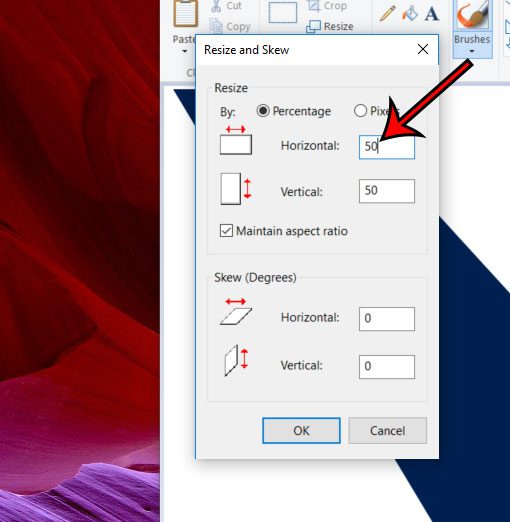

- HOW TO COMPRESS PICTURE SIZE USING PAINT INSTALL
- HOW TO COMPRESS PICTURE SIZE USING PAINT PC
- HOW TO COMPRESS PICTURE SIZE USING PAINT DOWNLOAD

HOW TO COMPRESS PICTURE SIZE USING PAINT DOWNLOAD
Paint is likely not going away for a while, though, and you’ll still be able to download it from the Windows Store. Instead, they are replacing Paint with Paint 3D. Note: As of 2017, Paint has been added to the deprecated list of apps no longer being developed by Microsoft.
HOW TO COMPRESS PICTURE SIZE USING PAINT INSTALL
If you only need to resize one image at a time and don’t want to install any third-party apps, Paint is a pretty decent resizing solution. Select the percentage you want, or the desired dimensions, and then click the “OK” button. When you type a horizontal or vertical value, Paint automatically creates the other value for you to maintain the original image’s dimensions. If you need something specific, you’ll need to switch over to using pixels. It uses percentage by default, and that’s fine for rough resizing. Paint gives you the option of resizing by percentage or by pixels. Here’s an example of a screenshot taken at 1920×1040 pixels, and then resized down to 600×317 to fit on our site.
HOW TO COMPRESS PICTURE SIZE USING PAINT PC
If you’re working with a screenshot that you took on your PC or mobile device-or any image that contains text-resizing tends not to work terribly well.

The image is crisp, and the details still present. The original image was 2200×1938 pixels, and we cropped it down to a mere 400×352. Here’s an example of a resized photograph. High resolution photos are more open to blowing up to larger sizes, but even they have their limits-blow up a photograph too much and things start to get grainy. Photographs tend to do best, at least when you’re reducing the size of an image, because they have lots of detail to begin with. The quality of a resized image really depends on the original image you’re resizing. We’ve rounded up our favorite tools for doing it in Windows, whether you need to resize just one image or a whole batch at once. Whatever your reason, it’s not hard at all to resize an image. Or maybe you want just the right size image to include in a blog post or Word document. Maybe you want to include an image that isn’t so ridiculously oversized in an email. Maybe you need to upload a smaller version of a photograph to Facebook (they do it automatically and badly when you upload anyway) or another social site. We’ve picked out a built-in option, a couple of third party apps, and even a browser-based tool. Here are our favorite image resizing tools for Windows.


 0 kommentar(er)
0 kommentar(er)
